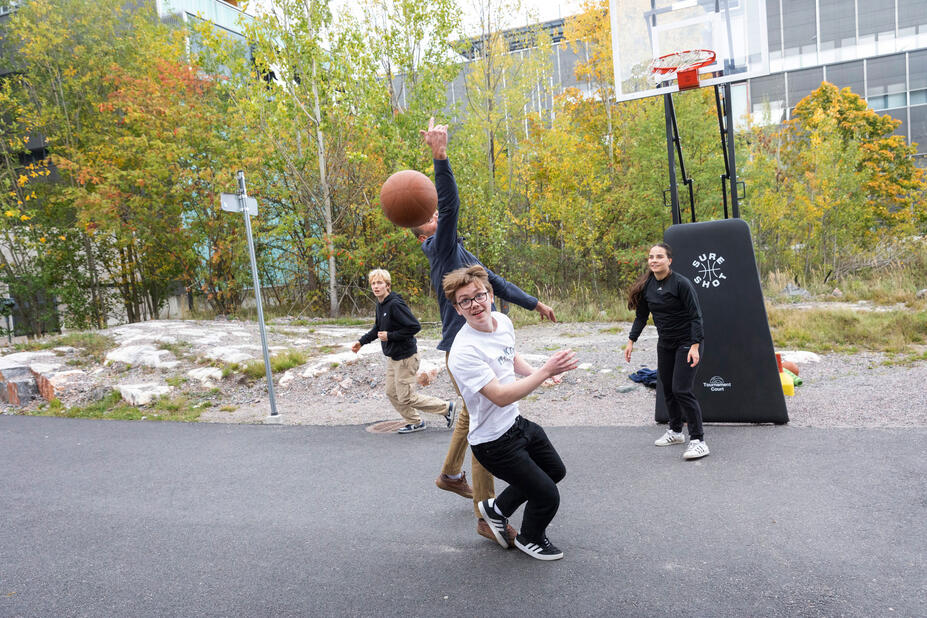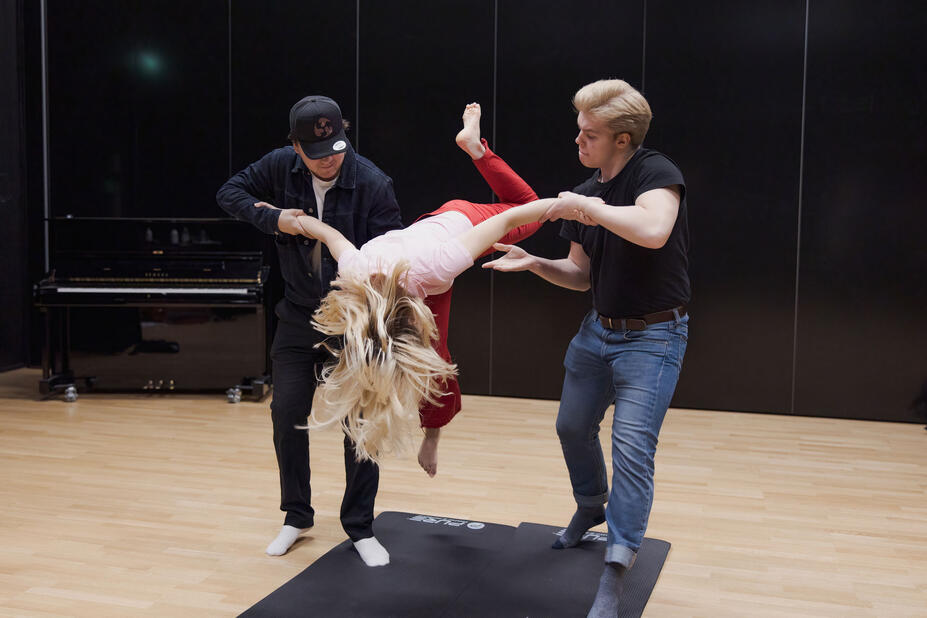
Why do we encourage students to be more physically active during their studies?
Studies show that, on average, students spend nearly 70% of their waking hours sitting. 75% of young people who have quit a hobby in a sports club would like to start their hobby again, and 75% of upper secondary education students would like to be more physically active. We also know that physical activity and increasing it in daily life support the student’s wellbeing and study capabilities – and, in turn, their learning. This is why we at the City of Helsinki want to get our upper secondary education students moving more as part of their study day and on leisure time.
Through cooperation between the school and the student’s home, we are helping our young people be more active and healthier in accordance with the national physical activity recommendations (UKK Institute):
Ages 7–17
- At least 60 minutes of moderate to vigorous physical activity per day
- Physical activity that considerably increases the heart rate and frequency of breathing three times a week
- Physical activity that strengthens the muscles and the bones three times a week
Ages 18–64
- Muscle fitness and body control twice a week
- Vigorous physical activity for 1 h 15 minutes a week or moderate physical activity for 2 hours 30 minutes a week
- Light physical activity as often as possible, breaks from inactivity whenever possible and enough restorative sleep
We encourage young people to increase physical activity in their leisure time
Physical activity during leisure time enables the young person to express themselves through an enjoyable hobby. That can also open a path to social interaction with others. At its best, physical activity during leisure time creates and maintains friendships. An enjoyable physical activity helps recovering from the daily challenges and provides a good balance for studies. When the young person improves their physical condition in their leisure time, their study capabilities and mental resources for studies improve as well.
Bringing up physical activity at educational institutions
Physical activity can be a sensitive topic of discussion, but there is no need to avoid talking about it. At schools, physical activity is brought up with a low threshold by using the model of the City of Helsinki. In the model, a student welfare worker charts the student’s relationship with physical activity through a short series of questions. The purpose is to refer the student to the school’s physical activity coach. Together, they can find an enjoyable and motivating form of physical activity for the student.
Physical activity coaches in Helsinki
General upper secondary schools
- Jami Laaksonen 040 549 7962 / 09 310 32149 jami.laaksonen@hel.fi(Link opens default mail program) Mäkelänrinne Upper Secondary School and Sibelius-lukio Upper Secondary School
- Ville Valasti 040 627 8211 / 09 310 38989 ville.valasti@hel.fi(Link opens default mail program) Ressu Upper Secondary School and Etu-Töölö Upper Secondary School
- Matti Tynjä 040 729 0734 / 09 31035638 matti.tynja@hel.fi(Link opens default mail program) Torkkelin kuvataidelukio ja Helsinki Upper Secondary School of Languages
- Cassandra Holmlund 040 680 1979 / 09 310 35395 cassandra.holmlund@hel.fi(Link opens default mail program) Gymnasiet Lärkan, Tölö Gymnasium ja Brändö Gymnasium
- Janne Koppinen 040 751 4819 / 09 310 34048 janne.koppinen@hel.fi(Link opens default mail program) Alppila Upper Secondary School ja Helsinki Upper Secondary School of Natural Sciences
- Daniel Sartipi 040 184 2511 / 09 310 37196 daniel.sartipi@hel.fi(Link opens default mail program) Helsinki Upper Secondary School of Media Arts
- Nelli Laustio 040 484 7345 / 09 310 38635 nelli.laustio@hel.fi(Link opens default mail program) Konepaja Upper Secondary School ja Kallio Upper Secondary School of Performing Arts
Helsinki Vocational College, Stadin AO
- Jani Jämsä 040 538 3231 / 09 310 38973 jani.jamsa@hel.fi(Link opens default mail program) Stadin AO Campus 2
- Linda Cainberg 040 511 7382 / 09 310 32155 linda.cainberg@hel.fi(Link opens default mail program) Stadin AO Campus 4
- Jesse Sundström 040 532 3163 / 09 310 38658 jesse.sundstrom@hel.fi(Link opens default mail program) Stadin AO Campus 3
- Penniina Toikkanen 040 832 0573 / 09 310 81032
penniina.toikkanen@hel.fi(Link opens default mail program)
Stadin AO Campus 1 ja Campus 5
Project to strengthen safety

Background material
See the City of Helsinki’s slide show and research review for more information about the promotion of physical activity.
Parents’ evening slides – promoting physical activity (PDF, in Finnish)
The file is inaccessible. The material of the slides is provided in an accessible form in the text above.
Research sources
- Husu P, Jussila A-M, Tokola K, Vähä-Ypyä H, Vasankari T. 2019. Objektiivisesti mitatun liikkumisen, paikallaanolon ja unen määrä, s. 29–40, Teoksessa Kokko S. & Martin L. (toim.) Lasten ja nuorten liikuntakäyttäytyminen Suomessa, LIITU-tutkimuksen tuloksia 2018. Valtion liikuntaneuvoston julkaisuja 2019:1.(Link leads to external service)
- Husu P, Jussila A-M, Tokola K, Vähä-Ypyä H, Vasankari T. 2021. Liikemittarilla mitatun liikkumisen, paikallaanolon ja unen määrä, s. 23–34, Teoksessa Kokko S, Hämylä R, Martin L. (toim.) Nuorten liikuntakäyttäytyminen Suomessa LIITU-tutkimuksen tuloksia 2020. Valtion liikuntaneuvoston julkaisuja 2021:1.(Link leads to external service)
- Kallio J, Kukko T, Syväoja H, Takalo S, Räsänen P, Strömmer J & Tammelin T. 2022. Aktiivisten taukojen vaikutus vireystilaan lukion matematiikan tunneilla. 2022. Liikuntalääketieteen päivät 16.-17.11.2022 abstraktit. Liikuntalääketieteen päivät 2022 (lts.fi)(Link leads to external service) .
- Syväoja, H. Liikkuva keho, tehokkaat aivot – fyysisen aktiivisuuden ja kunnon vaikutukset oppimisen edellytyksiin(Link leads to external service) .